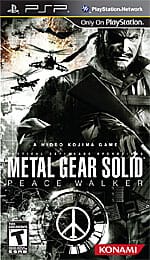The Boss’ Legacy
Metal Gear Solid: Peace Walker is a game that arguably few fans of the series saw coming. After the bombast of MGS4, it seemed that series creator Hideo Kojima would be moving on to an advisory role, allowing the next generation of up-and-comers at Kojima Productions to take up the reins on the venerable tactical stealth series. What was even more surprising about Peace Walker’s out-of-nowhere debut last year was that this purported “true” sequel to Snake Eater would be landing not on any HD console (or even the Wii), but on the PSP.
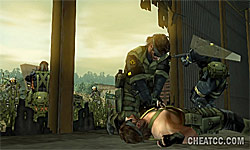
Despite the game’s incredible visual quality, it seemed hard to believe – even given Kojima’s pedigree – that Peace Walker would be able to deliver the in-depth MGS5 experience Kojima himself was saying the game would have. It does seem a little strange to place what is essentially the next core game in the series on to Sony’s oft-unloved portable, but frankly, once you get used to the idea, it doesn’t matter. With Kojima in the cockpit, the question of whether or not Peace Walker would be a great game never really came into play – it was more a matter of asking how an underpowered sequel could possibly live up to and surpass the complexity and mechanics of MGS4. Metal Gear fans, do yourself a favor: stop asking. Of course, the PSP can’t even come close to matching the power of the PS3, but that hasn’t stopped Kojima and his team from crafting the best damn portable MGS ever – and one that could have easily earned a spot as the next numbered entry in the series.
That being said, Peace Walker is probably best thought of as a hybrid between MGS4 and Portable Ops. From a design standpoint, the game is much closer to the former than the latter, though the military-sim elements of Metal Gear’s first PSP outing are alive, kicking, and vastly expanded. Being a true sequel to Snake Eater, it also more or less makes you forget about the events of Portable Ops, though it still features the series’ blend of historical events with plenty of fiction intrigue. The year is 1974; ten years after Snake inherited the title of Big Boss at Groznyj Grad, the hardened warrior has left the United States and formed the “Militaires Sans Frontieres,” a mercenary group whose only loyalty is to themselves and their causes.
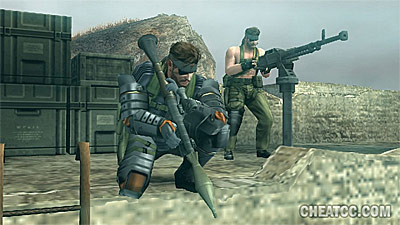
From the MSF’s base in Central America, Snake finds himself embroiled in a threat that could end in nuclear war, courtesy of the titular Peace Walker Metal Gear (though Peace Walker happens to be a nuclear deterrence system, designed to change the paradigm of the cold war). What makes Peace Walker a true sequel to Snake Eater, though, is that it chronicles in detail the lingering trauma Snake carries with him as a result of carrying out his mission to kill his mentor, the Boss, at Groznyj Grad. I’m not going to spoil anything here, but it’s as involved, if not quite as long-winded, as any console Metal Gear outing. Kojima clearly was not finished with the legend of Big Boss, and it shows in Peace Walker’s involved narrative.
Peace Walker’s design could be called an evolution of MGS4’s, as well, given its dual mechanics of stealth fieldwork and military simulation. First, the bad news: given, one would assume, the limited amount of memory available on the PSP, some standard stealth mechanics that have been an integral part of Metal Gear since MGS2 have been dialed down or cut away altogether. Snake’s basic move-set still applies, and he can perform basic CQC, but don’t expect to do anything fancy like peek out or shoot from behind cover or crawl while prone.
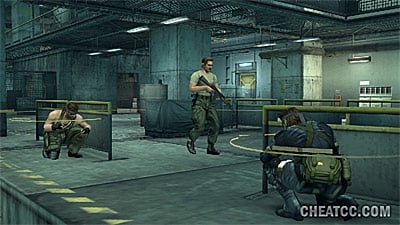
However, this isn’t entirely cutting moves out for the sake of saving processing-Peace Walker actually plays slightly differently from past MGS titles, with the possible exception of MGS4. Like Old Snake’s final run, you will be spending most of your time viewing any combat action from a behind-the-shoulder cam, with a rotatable camera when not in aiming mode. Unlike MGS4, though, the emphasis is still mainly on stealth (and the game isn’t designed to make it nearly impossible to get through any given area without resorting to loud, explosive violence); CQC-streamlined so that Snake can only throw enemies to the ground in a particularly abrasive takedown-is now far easier to pull off without alerting your enemies. But, what really changes things up is Peace Walker’s enemy recruitment system: rather than tranquilizing your enemies or having to drag them back to a truck for forced recruitment à la Portable Ops, you just attach a weather balloon-like device to an enemy for instant extraction. The goal of each mission becomes not just to avoid detection, then, but to capture as many enemies as possible.
This is paramount to your success, and not just because it empties a potential battleground of hostiles. Much like Portable Ops, recruiting soldiers to your cause gives you more soldiers in the field, but this time you’re doing more than just getting new blood to join you on the battlefield. Snake’s mission to stop Peace Walker is a one-man operation, and new members of the MSF need assignments if the outfit is to function efficiently. Here’s where Kojima throws some real simulation (and even a few light RPG) elements into Peace Walker’s design pastiche.
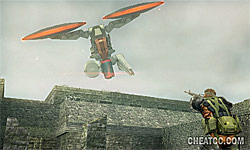
Completing a mission brings you back to Mother Base (in addition to earning you experience for your weapons), MSF’s shades-of-Big-Shell offshore headquarters, and Snake’s own burgeoning Outer Heaven. While at Mother Base, you have to decide where to assign any captured soldiers (who automatically become MSF recruits or are sent to the brig for hostile behavior). Similar to Snake’s army in the first core PSP MGS, each troop has stats which can be analyzed for best placement.
So, if some green cadet is ranked all Ds except in cooking, put him on the mess hall team. If someone has a high combat grade, put them in for combat duty. If there’s a good doctor in the house, put them on medical. Striking a good balance between each of Mother Base’s various departments is important, as it yields new GMP – MSF’s currency, essentially – to spend on research and development for equipment Snake can use in the field. Given that weapons and equipment are not on-site procurement this time around (don’t expect to find any spare rations or firearms in your travels), developing new technologies is not optional – without new R&D developments from MSF, even the one-man army Snake would be sunk.
Mother Base also expands as the game goes on, making between mission activities just as interesting as the game proper. Eventually you’re given a chance to play vs. ops with friends (sadly, I was not able to test Peace Walker’s co-op modes), recruit new MSF soldiers (through challenges rather than by force), deploy troops to other armed conflicts (these play out like a mini turn-based strategy game) and even build your own AI Metal Gear.
AI and machines actually play a very large role in Peace Walker. If you were disappointed that the creepy-as-hell Gekkos more or less filled the role of the titular walking battle tank in MGS4, you’re in for a treat here. Instead of facing a rogue’s gallery of bizarre foes like in past games, all of Peace Walker’s boss encounters are mechanical in nature, culminating in a series of encounters with AI-controlled monstrosities.
Even the most seasoned Metal Gear players will be put through the wringer getting through these sections, not just because of the sheer size of them, but because of the precision and skill needed to survive. Rations and extra ammo must be requested mid-battle from MSF, and you only have so many supply drops available. Every bit of equipment must be used at the proper time if you’re going to win, especially since these bosses hit hard and require a lot of strategy. It never becomes outright impossible, but you’ll probably go through at least a few half hour battles getting pinned down by cluster bombs and rockets (and subsequently dying because you ran out of rations and supply drops) before you can best some of these bosses.
With the amount of controls in the game, the button combinations on the PSP can be a bit slippery until you get used to them (I recommend using the MGS4-style control scheme, although the camera is tough to use at first), and it’s a shame that Peace Walker’s cutscenes are drawn rather than done in-engine. To their credit, both Ashley Wood and Yoji Shinkawa do a great job with the art, but overall the art direction lacks a little bit of the in-engine game’s punch (though the interactions keep things interesting). But these are minor points – Peace Walker’s imperfections don’t tarnish what’s otherwise a superbly-crafted game that’s every bit as Metal Gear as you would want or expect. Now, let’s cross our fingers for that PS3 version Kojima is considering…
RATING OUT OF 5 RATING DESCRIPTION 4.8 Graphics
Peace Walker is just about as good as a game can look on a PSP. There are numerous times when it doesn’t even look like a portable game. Pity the cutscenes are comic book-style rather than in-engine. 4.0 Control
There’s a relatively steep learning curve for the manipulation of actions and camera, but once you get used to Peace Walker’s control idiosyncracies, it works pretty well./td> 5.0 Music / Sound FX / Voice Acting
Metal Gear has always had incredible production values, particularly when it comes to voice acting – this one’s no exception. Kudos to Kojima and his team for including a memory install option to add voices to radio transmissions. 4.8 Play Value
Although the game’s difficulty gets really ramped up by the end, this is undeniably Metal Gear. Bonus for the Modern Warfare-style extra ops and various obligatory Easter eggs hidden here. 4.8 Overall Rating – Must Buy
Not an average. See Rating legend above for a final score breakdown.
Game Features:
